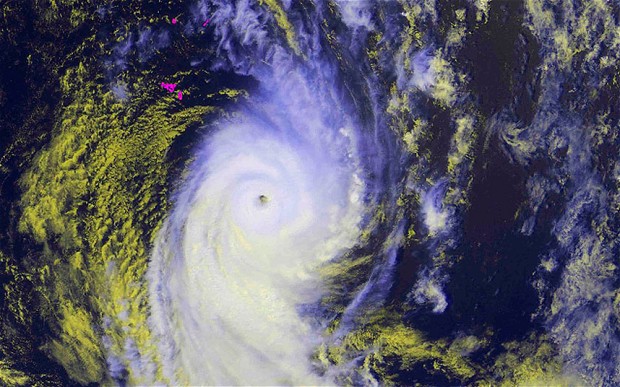Nature’s Engine – A ripple that spins.
A cyclone looks remarkably similar to a single ripple spreading slowly over calm water. Except that the ripple spins and grows, a wild engine powered by wind and water. We saw that natural engine spin a little too close for comfort here in Vava’u, Tonga, this past weekend.
Cyclone Ian came and went like a spinning top, the brunt of it’s force narrowly missing us here in Vava’u. We saw sustained winds of 50-60 knots for 24 hours, and gusts from 80-100 knots (up to 120 mph). It was a big storm, but the eye stayed about 30 miles off the coast of Vava’u.
Unfortunately, the island group to the south, Ha’apai, was not so lucky. These flat volcanic atolls took a serious pounding, and it’s estimated that 75% of all home were destroyed as the eye of the storm came directly over the islands. Click here to see photos of Ian’s devastation south of us.
Here on Fetoko, we were spared much damage, and the sailboat and island we call home with our friends, Ben and Lisa, fared well, thanks to intensive cyclone preparations for the two days before Ian arrived. The biggest injury was a few sea urchin spines that lodged in Rob’s butt while he was anchoring one of the motor boats (yup, it was low tide!). The most adventurous part was a mid-storm rescue of a German couple camped on a nearby island — Rob and Ben took the boat right before dark to investigate the flashlight signals we saw from across the water, returning with two very wet passengers. They stayed with us on Fetoko for the brunt of the cyclone.
Rob and I are writing a longer post now detailing the steps we took on the sailboat and on the island, so we can share with fellow sailors and travelers what worked and what didn’t. Stay tuned for the details, along with a full before/after picture slideshow of our preparations.


